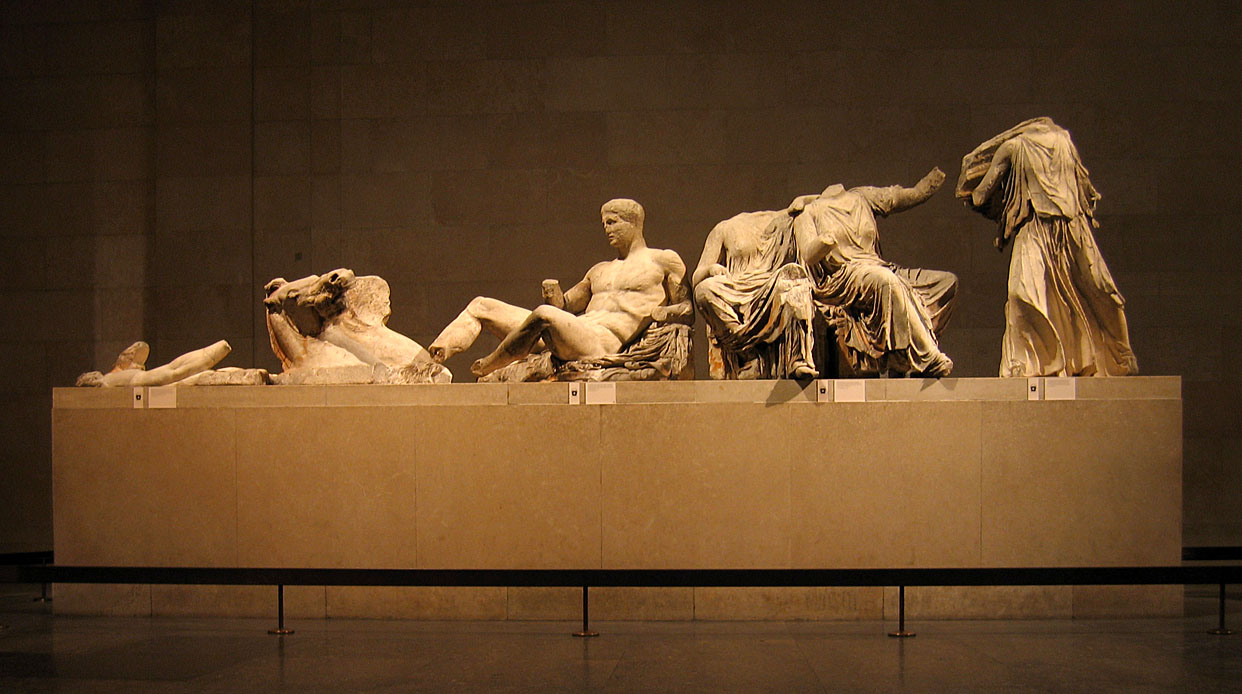The recent news about the economic and political crisis in Greece brings to mind the controversy surrounding the Parthenon Marbles.
The Parthenon Marbles are the classical Greek sculptures by Pheidias and his workshop that originally were part of the Parthenon in Athens. They also are known as the Elgin Marbles, named for the Earl of Elgin, Thomas Bruce, the British ambassador to the Ottoman Empire who stole them from Greece in the years 1801-1812. Well, he had a permit to remove them, but the legality of that (now lost) document is hotly debated.
The Parthenon sculptures have been through a lot. After the temple was turned into a church in the sixth century C.E., many of the sculptures from the east pediment (the triangular space below the roof) were vandalized.
In 1687, occupying Turkish armies were storing ammunition in the temple when the Venetians ignited them, causing an explosion. The sculptures on the west pediment survived the explosion, but some shattered when the Venetian commander tried to remove them so he could bring them back to Italy.
Finally, in 1801 Lord Elgin began to remove the marbles and ship them to Britain. In 1816, Bruce needed money and so he sold the sculptures to the British government which put them on display in the British Museum, where they still are on view today.
Those who think that British government should return the sculptures to Greece note that the original permit never materialized when requested by the British government in 1816, and so the copy Elgin submitted could be counterfeit. Furthermore, the copy stated that Elgin could remove a few pieces of stone with inscriptions, rather than many sculptures. Most importantly, people who believe the sculptures should return to Athens (and to a new museum there) state that it simply is the right thing to do.
Those who think the sculptures should remain in London claim that Elgin’s permit was legal. They assert that the sculptures survive today because the British government took care of them and if Greece had them, they would be severely damaged by now. This camp also makes the point that returning the marbles to Athens would set a precedent for restitution claims that could empty major museums in Europe.
Will the economic crisis impact the campaign for the repatriation of the sculptures? It may. Watch for it in the news.
“The request for the restitution of the Parthenon Marbles is not made by the Greek government in the name of the Greek nation or of Greek history. It is made in the name of the cultural heritage of the world and with the voice of the mutilated monument itself, that cries out for its marbles to be returned. – Evangelos Venizelos, current Deputy Prime Minister and Minister of Finance of Greece, potential new Prime Minister of Greece
Read Andrew Sullivan’s post on the subject in The Daily Beast (June 5, 2009).
The Parthenon Marbles
[nggallery id=20]
Recommended Reading


